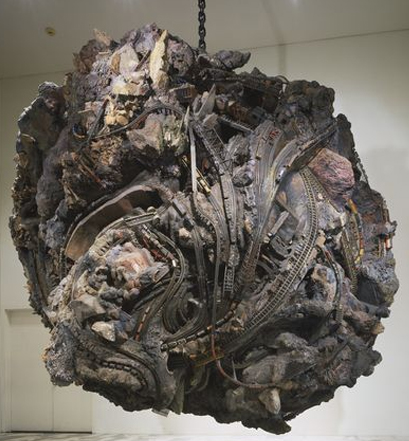THE TERM ''installation'' is absent from the Thames & Hudson Dictionary of Art and Artists, which is odd in a volume that finds space for both ''performance art'' and ''video art'' - and even odder when you consider that installation (whose practitioners specialise in the creation of what you might call environments rather than discrete objects) has become, after painting and sculpture, the most prevalent form of artistic self-expression in the late twentieth century. No visual arts festival, no Kunsthalle survey of new tendencies or young contemporaries will be without a few examples of installation work. The architecture of the modern museum has, doubtless, played its part: the sheer scale of many contemporary art spaces encourages artists to think big, to fight scale with scale, to expand their ambitions to fill the vast tabula rasa of the modern museum or gallery.
Joseph Beuys springs to mind as the most notable post-war embodiment of the tendency, with his ambitious swathings of the gallery in felt, his multiple invasions of institutional space. He was not merely responding to the size of modern museums and galleries: Beuys realised, with an acuity that has borne fruit in his posthumous canonisation as prophet or seer, that the installation allows its creator to endow his work with something of the grandeur, the declarative heroism of the art of the past. Installation, you could argue, is not a late twentieth-century phenomenon at all: the Gothic cathedral, a total artistic environment devised in the service of religious orthodoxy, might be described as the ur-installation; and what are the great decorative schemes of the Renaissance - Masaccio's Brancacci Chapel, Michelangelo's Sistine ceiling - if not installations of the highest order?
For a contemporary artist, unsustained by anything like the commonly held religious faith of such predecessors, the risks of...


